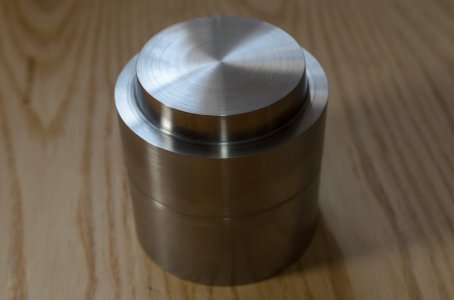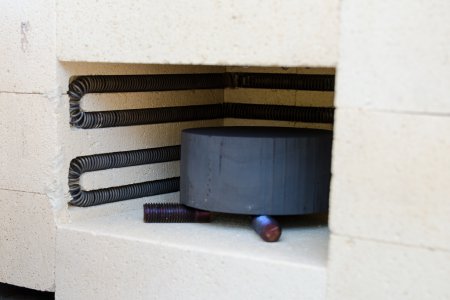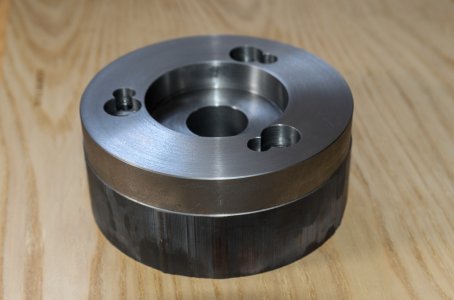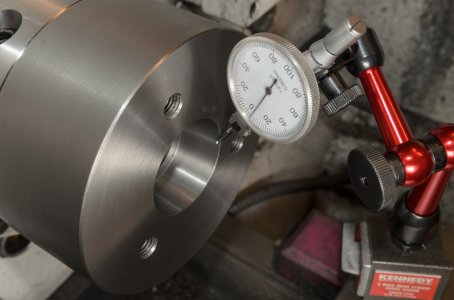I have ordered some cast iron for the backplate, and 4130 condition T for the ER20 collet chuck --- I'll post some pictures and feedback when I start with the actual machining. Incidentally, the cast iron is only about 5% more expensive (by volume) than the 4130 in condition T from my supplier.
In the meantime, I have come across an interesting statement in Guy Lautard's "The Machinist's Bedside Reader". In my copy, the article is called "Cold rolled steel - what it is, and how to stress relieve it", which appears on page 23. A quote from this article:
The article goes on to mention that milling a flat on a CRS bar will result in unbalanced stress, and subsequent warping, requiring a stress relieving treatment.
The salient points:
1. Even if I used cold-drawn steel without any subsequent stress relief, it should not distort (much?), because I will end up removing the stressed skin all around anyway (unlike starting with plate).
2. The condition T material will be stressed isotropically (I hope) after the heat, quench and temper cycle.
In the meantime, I have come across an interesting statement in Guy Lautard's "The Machinist's Bedside Reader". In my copy, the article is called "Cold rolled steel - what it is, and how to stress relieve it", which appears on page 23. A quote from this article:
"I said above that 'Cold Rolled Steel' is somewhat of a misnomer. A better term is 'cold finished steel'. The sheet forms are about the only ones that are actually rolled. Square, hex, round and flat sections are made by being lubricated and drawn through dies, after the black scale has been removed, probably by pickling.
As you might well deduce, the surface layer of CRS is stressed by the drawing operation.
If you chuck a piece of 3/8 (inch diameter) CRS and machine it down to 5/16, the stressed surface layer is removed all around the material, and the piece does not warp, because there is no unbalanced stress."
As you might well deduce, the surface layer of CRS is stressed by the drawing operation.
If you chuck a piece of 3/8 (inch diameter) CRS and machine it down to 5/16, the stressed surface layer is removed all around the material, and the piece does not warp, because there is no unbalanced stress."
The article goes on to mention that milling a flat on a CRS bar will result in unbalanced stress, and subsequent warping, requiring a stress relieving treatment.
The salient points:
1. Even if I used cold-drawn steel without any subsequent stress relief, it should not distort (much?), because I will end up removing the stressed skin all around anyway (unlike starting with plate).
2. The condition T material will be stressed isotropically (I hope) after the heat, quench and temper cycle.





